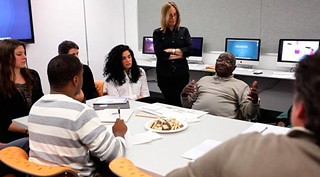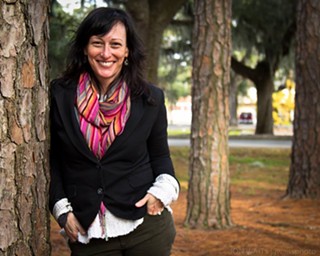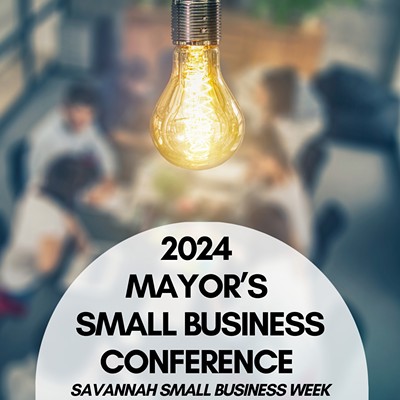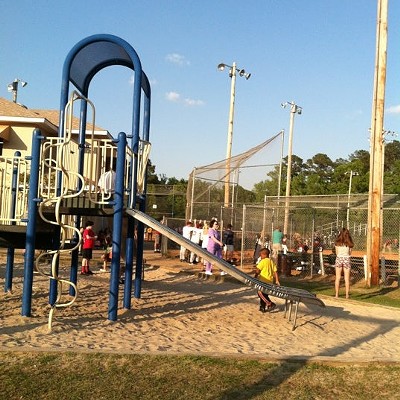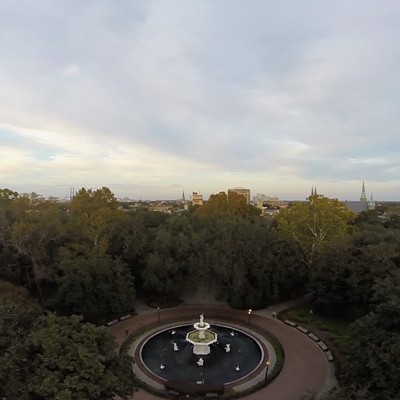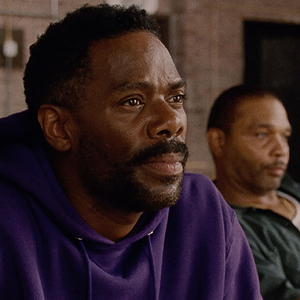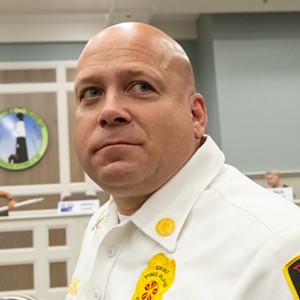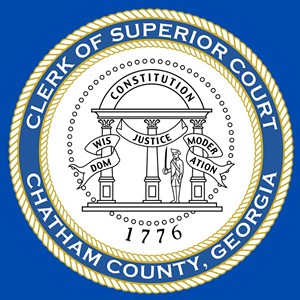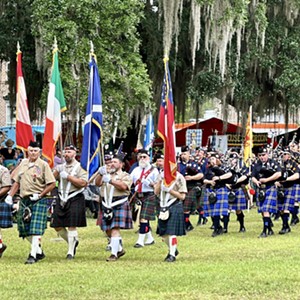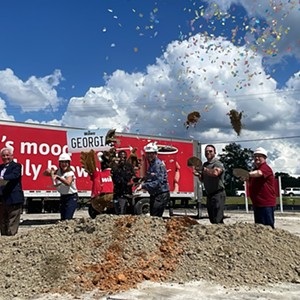The term “social innovation” is the new buzzword.
It’s become popular among designers eager to do more than create pretty logos and choose color palettes, who want to apply their expertise towards socioeconomic justice, poverty reduction and helping people live better lives.
But no matter how anyone tries, it’s impossible to solve the problems of the world by sitting in an air–conditioned room sipping bottled water.
That’s the impetus for the upcoming DO–ference, a series of strategizing sessions that will explore real world solutions for a neighborhood here in Savannah. Running on a parallel track with SCAD’s Design Ethos conference that showcases some of the globe’s most progressive thinkers, the DO–ference distills those big ideas and applies them to city’s Waters Avenue Revitalization Initiative.
“The word ‘do–ference’ is a play on the traditional conference,” explains Scott Boylston, SCAD professor of Design for Sustainability and Graphic Design and Design Ethos founder. “Designers want to use their skills to directly enhance social context, and a conference should be a space where we’re doing what we’re talking about.”
Boylston has spent the past decade finding hands-on opportunities for his students, including the preparation of old wood for a garden at Shuman Middle School and teh construction of an outdoor eating area out of reclaimed materials for certified–green restaurant Thrive.
The Waters Avenue initiative is a bigger and broader application of his classroom teachings, and for the past eight months, 12 SCAD classes have been walking the corridor, conversing with residents and brainstorming with Waters Avenue Business Association (WABA) leader Sidney J. Johnson on projects like the “Proud to be Waters” poster campaign and a reclamation of dozens of abandoned cement planters.
Though Design Ethos and the DO–ference aren’t officially linked with the city’s tax–funded plan to invigorate the blighted area, the ideas that come out of them will feed the plan’s next steps. “We want to empower citizens to become engaged in the city process,” says Boylston.
Dr. Landis D. Faulcon, the city’s consultant for the Waters Avenue project, welcomes the creativity and calls the double conference “very timely.”
“We look forward to the visitors during the conference,” Dr. Faulcon wrote in a recent email to Connect. “Their contributions will be considered as we move forward this spring in redeveloping city–owned properties along the corridor and implementing a streetscape initiative.”
During the DO–ference, six teams of visiting designers and different “voices” from the community and city will focus on various aspects of the revitalization. Municipal employees, artists and entrepreneurs will have a chance to put their two cents into the areas of beautification, public safety, consensus building, vacant properties, business vitality and developing tools for economic development.
The teams will work to “amplify and accelerate” projects already in progress along the corridor, including Globecroppers, a youth program led by former Harlem Globetrotter Gator Rivers that combines basketball and urban gardening, and the renovation of the once–regal, now–decaying Romana Riley School on Anderson Street. Boylston refers to these projects as resources that give designers a toehold on where to go next.
“The goal is to identify the assets in the community that are already contributing and treat them as clients,” he says. “The directors of these projects will have whole gaggle of designers at their service.”
Artist and community leader Jerome Meadows, whose MeadowLark Studios and Indigo Sky Community Gallery are already thriving assets on Waters Avenue, spent the last two quarters working with SCAD grad students as a visiting artist. There he was able to address the notion of art and community in an academic setting and demonstrate it on the street where he works.
“Having an artistic and cultural presence on Waters Avenue is the opposite of preaching to the choir,” muses Meadows, referring to other downtown neighborhoods where residents already see the value of art and support it. “There is no choir here.”
Meadows will serve as business leader on the “Empowering Culture” team, which also boasts the brain power of former Creative Coast director Chris Miller and AWOL founders DaVena and Tony Jordan.
He counts the reclaimed planters and the recent installation of SeeSAW’s “Before I Die” community blackboard along the corridor as evidence of cultural progress, though he wants to make sure all the great ideas that come out of the conference don’t wither after the visiting designers go home. He, Boylston and local design firms Paragon and Bright White Space intend to remain involved as the city revs up the Waters Avenue revitalization.
“What’s most important that these initiatives have longevity,” exhorts Meadows. “We can’t get people all excited and then have nothing happen.”
Some talking is required, but the real doing will come when the Waters Avenue iniative kicks in later this year.
‘Do-Ference’ & Design Ethos 2012
When & Where: April 19–21, various venues
Cost: $30–350; all students $30–50
Info: designethos.org

